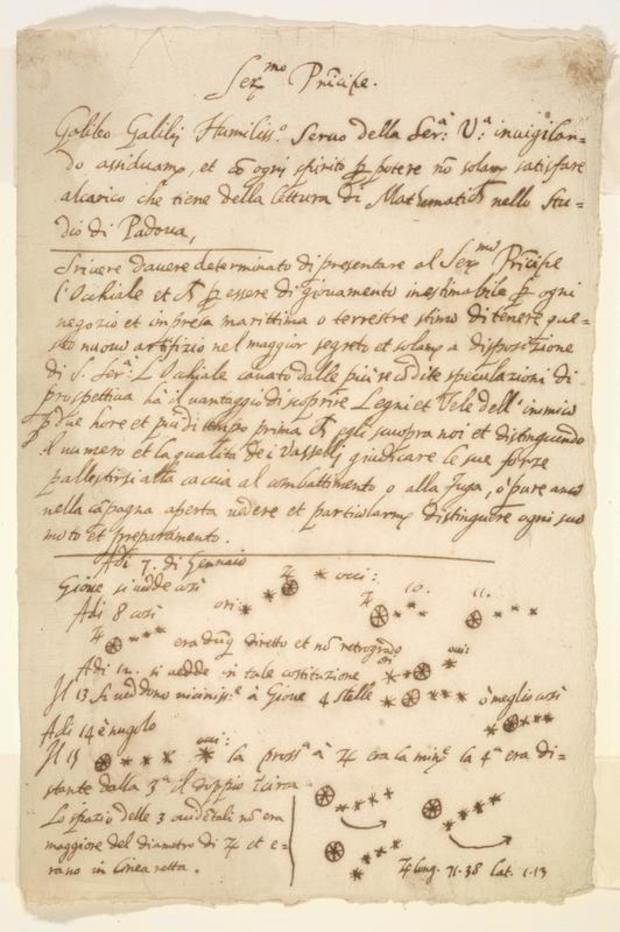For nearly a century, the library at the University of Michigan had proudly displayed the so-called “Galileo manuscript” — a document believed to be written by the famous astronomer Galileo Galilei. Now, it’s been revealed to be a forgery.
The university recently announced the one-page document, described as one of the “jewels” of its collection, appears to have been written in the 20th century, rather than 1609, as previously believed.
The library launched an internal investigation after Nick Wilding, a history professor at Georgia State University and author of an upcoming biography of Galileo, expressed “serious doubts about its authenticity.” Wilding was known for exposing similar forgeries.
According to the university, the fake document was likely written by prolific Italian forger Tobia Nicotra. Nicotra spent two years in jail in 1934 for forgery, which included forging Galileo documents, the university said.
Wilding had specifically questioned its watermark and provenance, and the school said his evidence was “compelling,” coming to a similar conclusion. Officials found no other documents with the same “BMO” watermark, referencing the Italian city of Bergamo, before 1770. Additionally, they found “no trace” of the manuscript’s existence before 1930.
The document contains drafts that refer to Galileo’s presentation of a new telescope to the Doge of Venice on August 24, 1609 and his observations of Jupiter using a telescope in January 1610. It was those observations that led to his discovery of Jupiter’s moons, marking the first time observational data showed celestial objects orbiting a body other than Earth.
The discovery debunked the theory that everything in the universe orbited our planet, laying the foundation for modern astronomy. “It reflects a pivotal moment in Galileo’s life that helped to change our understanding of the universe,” the university wrote of the notes.
The final, genuine version of the first half of the manuscript is located in the State Archives in Venice. The real notes on Jupiter’s moon are part of the Sidereus Nuncius Dossier at the Florence National Central Library.
The forged manuscript was acquired by Detroit businessman and collector Tracy McGregor in May 1934 from the auction firm American Art Anderson Galleries, the university said. The auction catalog had noted it was authenticated by Cardinal Pietro Maffi, the archbishop of Pisa.
Following his death, McGregor’s trustees bequeathed the manuscript to the University of Michigan in 1938, where it’s lived ever since.
The school is “now working to reconsider the manuscript’s role in our collection.” In the future, “it may come to serve the research, learning, and teaching interests in the arena of fakes, forgeries, and hoaxes,” the library said.




